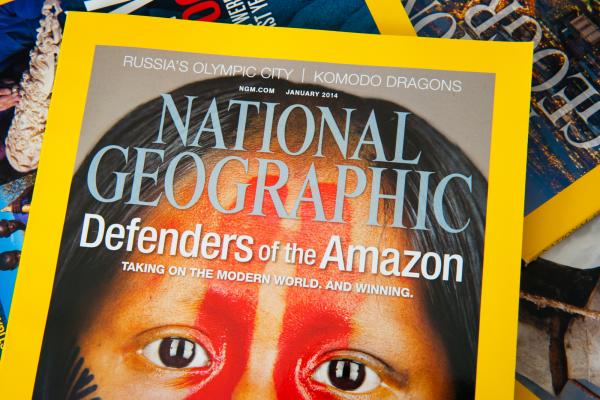After 130 years of publication, editors of National Geographic magazine acknowledged that their past coverage of people of color, both in and out of the U.S. was racist, according to a essay in their April issue devoted to the topic of race.
National Geographic's Susan Goldberg, the magazine's first woman and first Jewish editor-in-chief, hired John Edwin Mason, a University of Virginia professor who specializes in the history of photography and the history of Africa, to delve into the publication's archives.
Mason found that the magazine virtually ignored people of color in the U.S. until the 1970s who were not laborers and domestic workers, and consistently perpetuated people of color from foreign lands as "exotics, famously and frequently unclothed, happy hunters, noble savages — every type of cliché."
“Americans got ideas about the world from Tarzan movies and crude racist caricatures,” Mason said. “Segregation was the way it was. National Geographic wasn’t teaching as much as reinforcing messages they already received and doing so in a magazine that had tremendous authority. National Geographic comes into existence at the height of colonialism, and the world was divided into the colonizers and the colonized. That was a color line, and National Geographic was reflecting that view of the world.”
From National Geographic:
“National Geographic’s story barely mentions any problems,” Mason said. “There are no voices of black South Africans. That absence is as important as what is in there. The only black people are doing exotic dances … servants or workers. It’s bizarre, actually, to consider what the editors, writers, and photographers had to consciously not see.” ... Mason also uncovered a string of oddities—photos of “the native person fascinated by Western technology. It really creates this us-and-them dichotomy between the civilized and the uncivilized.” And then there’s the excess of pictures of beautiful Pacific-island women.
"It hurts to share the appalling stories from the magazine’s past," Goldberg wrote. "But when we decided to devote our April magazine to the topic of race, we thought we should examine our own history before turning our reportorial gaze to others."
Read more here.
Got something to say about what you're reading? We value your feedback!






